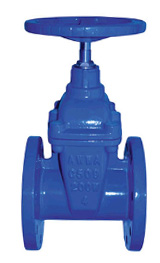10 月 . 31, 2024 10:44 Back to list
electric actuated butterfly valve
Electric Actuated Butterfly Valve An Overview
In industrial applications, valves are crucial components that control the flow of fluids. The electric actuated butterfly valve is a prominent type of valve that combines the simple yet effective design of the butterfly valve with the efficiency and precision of electric actuation. This combination makes the electric actuated butterfly valve suitable for a variety of applications across different industries, including water treatment, chemical processing, and HVAC systems.
Design and Functionality
The butterfly valve consists of a circular disk, known as the butterfly, which pivots around a central shaft. When the valve is open, the disk rotates to allow fluid to flow through; when closed, it creates a seal that prevents flow. The electric actuator connects to the valve and is responsible for controlling its position. This actuator converts electrical energy into mechanical energy, allowing for precise control of the valve’s opening and closing.
Electric actuators boast several advantages over their pneumatic and hydraulic counterparts. They provide faster response times, require less maintenance, and offer simplicity in installation. Additionally, they can be integrated with modern control systems, making them ideal for automated processes.
Benefits of Electric Actuated Butterfly Valves
1. Energy Efficiency The electric actuators consume power only when they are in operation. This aspect makes them more energy-efficient than other actuated valves, reducing operational costs and environmental impact.
2. Precision Control Electric actuators can provide precise positioning and control over the flow rate. This is particularly beneficial in applications requiring specific flow conditions and tighter process control.
electric actuated butterfly valve

3. Reduced Maintenance Electric actuated butterfly valves have fewer moving parts than pneumatic or hydraulic actuated alternatives, leading to lower maintenance requirements. Their robust design also enhances longevity, ensuring consistent performance over time.
4. Integration with Automation The ability of electric actuators to interface with sophisticated control systems enables remote monitoring and operation. This feature is essential in modern industries that prioritize automation and process optimization.
5. Versatility These valves can handle a wide range of media, including gases, liquids, and slurries. Their ability to operate under different temperature and pressure conditions makes them suitable for various industrial applications.
Applications
Electric actuated butterfly valves are utilized in numerous sectors. In the water and wastewater treatment industry, they manage the flow of water and effluents, ensuring efficient operations. In chemical processing facilities, they control the flow of corrosive and hazardous materials, providing safety and reliability. HVAC systems also employ these valves to regulate airflow and maintain optimal environmental conditions.
Conclusion
Electric actuated butterfly valves are a vital component in modern industrial systems. Their combination of efficiency, precision, and reliability makes them an excellent choice for a wide range of applications. As industries continue to move towards automation and energy efficiency, the demand for electric actuated butterfly valves is expected to grow, solidifying their role in shaping the future of fluid control technology. By investing in these advanced valve solutions, industries can enhance their operational efficiency and sustainability in an increasingly competitive landscape.
Share
-
Understanding the Differences Between Wafer Type Butterfly Valve and Lugged Butterfly ValveNewsOct.25,2024
-
The Efficiency of Wafer Type Butterfly Valve and Lugged Butterfly ValveNewsOct.25,2024
-
The Ultimate Guide to Industrial Swing Check Valve: Performance, Installation, and MaintenanceNewsOct.25,2024
-
Superior Performance with Industrial Swing Check Valve: The Essential Valve for Any SystemNewsOct.25,2024
-
Industrial Swing Check Valve: The Ideal Solution for Flow ControlNewsOct.25,2024
-
You Need to Know About Industrial Swing Check Valve: Functionality, Scope, and PerformanceNewsOct.25,2024